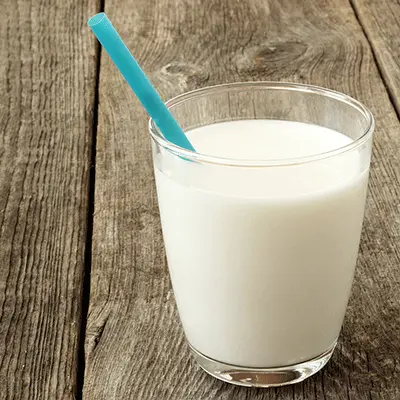Wondering If you Can Freeze Milk? Here's How to Freeze Milk Safely
You can freeze milk for up to six months, but for the best quality, it's recommended to use it within one month.
Freezing milk is a way to extend its shelf life and prevent waste, but there are a few key things to know to ensure the best quality. From the right storage containers to thawing tips, this guide covers everything you need to successfully freeze and use thawed milk.
Here's what you need to know about freezing milk.
How to Freeze Milk According to Experts
Freezing milk is almost as simple as just putting it in the freezer. Key word being almost. There are some details you’ll want to pay attention to, starting with the container you’re freezing the milk in.
Before freezing milk, note that it takes three to four hours in small containers and up to overnight in larger ones, depending on freezer temperature and volume.
“Milk can be frozen in the original container, as long as it’s not glass,” says Nicole Martin, PhD, assistant research professor in dairy foods microbiology at Cornell University. “Liquids like milk expand a little when frozen, so this could break glass bottles. Large containers like gallons will take a long time to freeze — and thaw — so freezing smaller containers (e.g., half-gallons) is preferable.”
-
If you decide to freeze milk before the expiration date, you’ll want to put it in small containers first.
-
The best container to freeze milk in is an airtight, freezer-safe plastic container.
-
Because the milk will expand, it’s helpful to leave about an inch of space at the top.
-
You may notice the fat separates from the rest of the milk when you freeze it; don’t worry about it – it’s completely normal. That’s because the protein and minerals are the first to thaw; the water in the milk thaws later.
That's it! For freezing it at least. Thawing frozen milk involves some other nuances it's important to be aware of.
How to Thaw Frozen Milk
Thawing frozen milk isn’t the same as thawing frozen water. Milk is a perishable product that can spoil if left out too long. So be intentional about how you thaw it.
“Always thaw milk in the refrigerator,” Martin advises. She says this could make the thawing process take up to two days if the container is large. But it will ensure the milk is safe to consume.
Of course, you might want to wait a moment before drinking it.
The milk you buy from the store undergoes a process called homogenization, where the fat globules in milk are broken down into much smaller globules and mixed well with the rest of the milk to ensure its smooth and never-lumpy texture. When freezing and thawing milk, however, the fat can separate from the rest of the milk, making it less smooth than usual.
This is why Martin forewarns that consumers may experience differences in the texture and taste of milk after thawing it. However, with a little work, they can return it to a state that’s closer to how it was purchased. “There may be fat separation in high-fat products, but once the product is fully thawed, it can be shaken to mix the fat back in, or used immediately in a recipe."
Common Reasons to Freeze Milk
Freezing milk may be more complex than freezing water, but there are good reasons to do it. Here are some of the more common ones.
● Keep milk safe past the expiration date. “Storing milk in the freezer will prevent bacteria from growing while the milk is frozen,” Martin says. So, if you have more milk than you can consume before its “best used by” date, freezing milk can come in clutch.
● Not enough room in the fridge. Accidentally purchased more milk than you have room for? Since freezing milk suspends the spoilage process, it’s a great way to store your excess and avoid food waste.
● Using frozen milk in special recipes. You might be surprised how often people use frozen milk to level up their food. Try making milk ice cubes for your next iced coffee, for example.
Don’t need to freeze milk right now but remain curious about the process? Give it a try! And when the milk is thawed — or even still frozen — test some recipes that call for milk.
Looking for information on freezing other dairy products? Explore below:
Can You Freeze Cheese? | Can You Freeze Yogurt? | Can You Freeze Butter?















